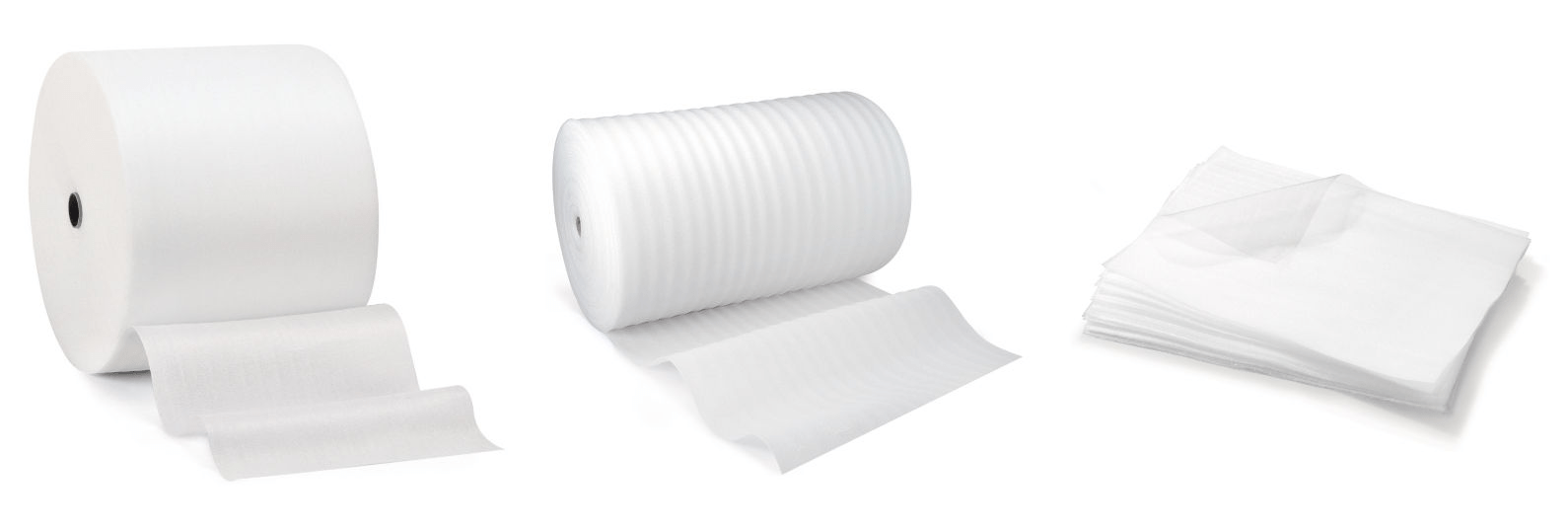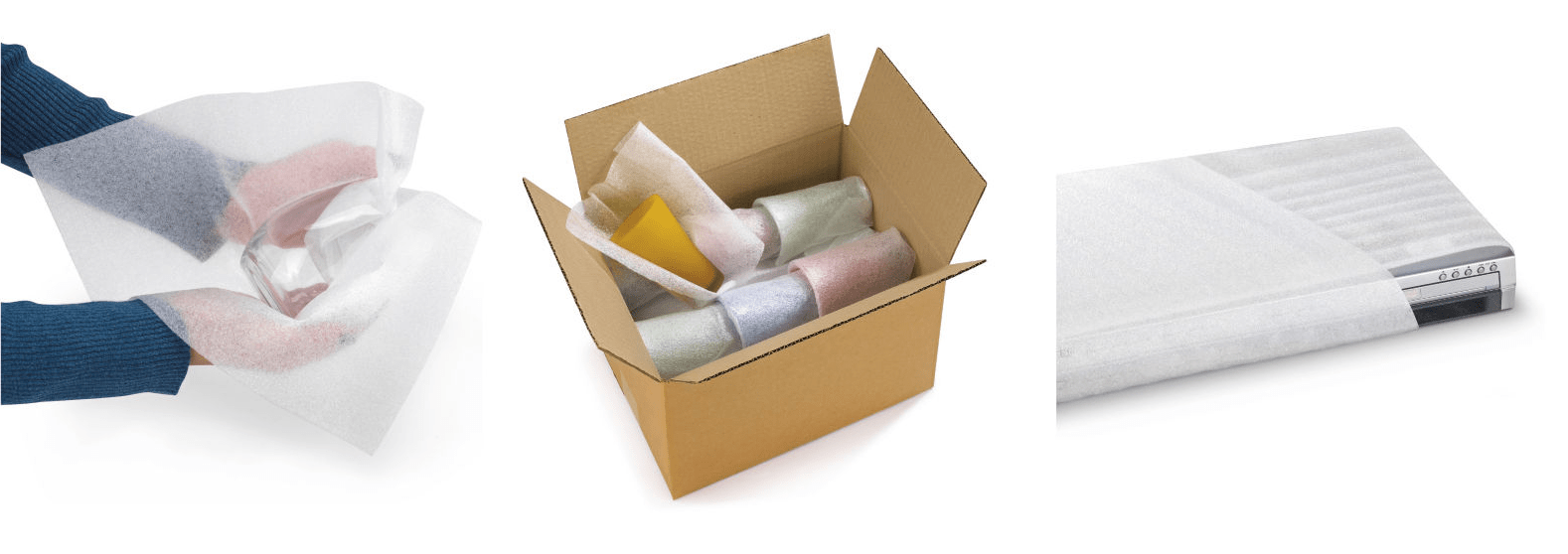(02) 8417 2190

Don't Waste Time! Facts You need to know About Bubble and Foam Packaging
Bubble Wrap
Bubble wrap is a very known packaging material that everyone is familiar with. The material is lightweight and inexpensive, and provides excellent protection thanks to the soft cushioned air bubbles. Bubble wrap is made up of hundreds of air pockets that are enclosed in layers of polyethylene. This gives it great cushioning and protection properties.
There are many types of bubble wrap, including rolls that can be easily cut to length. It can be used to protect light items, 40 micron for wrapping and protecting, 55 micron for heavy objects, sharp angles and 75 micron for heavy or fragile packaging.

Perforated rolls allow for easier cutting and can be cut in different sizes. This allows you to easily tear sheets off quickly and efficiently. These rolls are great if you have similar items to protect and need only a standard length (e.g. 500mm or 800mm). They can be cut to specific lengths and are better for portion control. This makes them less expensive than standard rolls. They are ideal if you need to wrap many items of the same size.
The bubble dispenser boxes simplify the process by keeping the roll clean and dust-free in a compact, convenient box.
Bubble wrap bags are great for small items. They offer all the protection of wrap, but come in a handy bag that is perfect for protecting items with low profile. You can seal bags with heat sealer, tape or adhesive. Once sealed, they provide protection and cushioning for your contents. There are also special bags available, like anti-static bubble bags, which are ideal for delicate electronics like smartphones, computers, and electronic components.

Protective bubble is a versatile packaging material that is why it is so popular. It can protect anything, from small items that require light cushioning to larger items to fragile items like ceramics and glass.
Bubble wrap can cause small cell damage to polished items if it is used on polished materials. This is a problem with materials like polished metal, glass, and wood. We recommend that you wrap your premium, polished items in polythene or foam first before wrapping in bubble wrapping.
Foam Packaging
Foam packaging, which is less well-known than bubble wrap, can offer extraordinary protection due to its lightweight and thin nature. The foam is extremely durable and provides excellent protection.
Foam is non-abrasive and lint-free. It won't leave any marks or scratches. It is ideal for wrapping shiny and polished items like metal, glass, or polished wood. This protects against surface rubbing, scratching, and staining.
Because of the way it is made, standard foam protection is less likely than bubble wrap to create static electricity. This makes it more suitable for sensitive parts and general electrical equipment. You can laminate it to improve its strength and puncture resistance or aesthetics. Foam is a great material to re-use. It retains its bounce and protects against damage due to the way it's constructed.
There are many types of foam packaging, just like bubble wrap. Foam wrap can also be purchased in rolls. You can cut it to your desired size and use it to wrap, separate and insulate. It is lightweight and easy to handle so you can wrap or protect oddly shaped items in the same way as bubble wrap.

Foam wrap can also be cut in sheets, which are ready-to-use in precut sizes. This allows you to wrap around products or interleave between products in cartons. It saves time and helps you save time.

Foam comes in a variety of thicknesses, from a thin 1mm for interleaving and surface protection, to a thicker 4mm that is better suited for cushioning and insulation.
Foam blocks, another type of foam block, are another popular option. These solid blocks can be used to brace and block packages, separate items, or reinforce corners. These are great for protecting furniture and other items. These are made in a way that is more durable than foam wrap. However, they can also be cut and used multiple times.

What material is best for you?
Both are excellent choices for protecting packaging, but each material has its own unique properties that make them more suitable for different purposes. We recommend that you use the right packaging for the right purpose. Before making a decision on which material to buy, consider the intended use.
Bubble wrap is an excellent all-around protector. Bubble wrap is a great all-round protector, whether you are wrapping fragile or lightweight items. There are many thickness options available to suit a variety of items sizes and weights. It can leave marks on reflective and polished surfaces.
Foam packaging is typically lighter and thinner than bubble wrap. This means that you can store more square meters on-site and take up less space in cartons. Foam packaging is ideal for delicate items with high-quality polished surfaces. Its smooth texture will not leave any marks on the products.
Packaging is always an issue. The good news is that the prices for both materials are very comparable per square metre. A 1mm foam bundle will cover 3x the area of a small bundle of 1500mm x 100m bubble wrapping. This makes it easy to choose the right material and thickness for your packaging needs.
The Expert Opinion
We finally spoke with two experts to get their advice on choosing between the two. Fiona MacDougall is the Jiffy Sales and Marketing Director. We asked her about these materials.
Both foam and bubble wrap packaging offer excellent protection. Bubble wrap offers economy, protection and ease-of-use. Foam, however, has the ability to protect polished surfaces and delicate surfaces.
Bubble wrap was the traditional choice for packers. But, users are increasingly realising the many advantages of packaging foam. It is lightweight and retains its memory. The wide variety of thicknesses available offer great choice and value, depending on the application. The combination of the two materials is a firm favorite - bubble bonded with foam, creating a bubble/foam laminated product. This gives you the cushion and bounce of bubble with the non-abrasion and care of foam. Fast Direct Packaging, our partner, can provide more information about this amazing product.
We from Fast Direct Packaging, is also on hand to share our thoughts about the importance of carefully weighing all options when you source your packaging.
This blog explains that choosing the right product protection material is the most important thing to consider when selecting between foam or bubble to protect your products. Fast Direct Packaging extensive range of protective packaging options ensures we have a solution to every business or application. Our team of Packaging Specialists is available to assist you in making the right decision.
